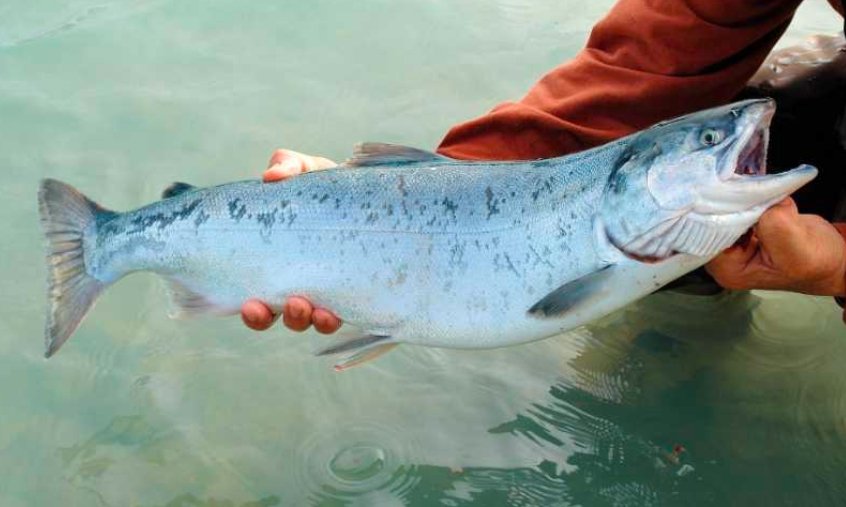Scotland has issued official slaughter guidelines to ensure more humane treatment of farmed salmon, aiming to eliminate pain and distress during slaughter and related activities.
The new framework mandates measures like stunning, CCTV monitoring, trained personnel, and legal compliance. Released under the Animal Health and Welfare (Scotland) Act, the guidance is stirring debate among charities, industry groups, and government agencies.
Welfare Laws Meet Fish Farming
Three key facts, laid out fast:
-
The guidance is issued under Section 38 of the Animal Health and Welfare (Scotland) Act 2006.
-
It covers the lawful requirement to spare farmed fish from avoidable pain at slaughter The Times+5Scottish Government+5Fish Farming Expert+5Fish Farming Expert+2Fish Farming Expert+2Fish Focus+2.
-
Scotland farms around 55 million salmon annually The Times+1Fish Focus+1.
Farmed fish are now legally recognized as sentient—able to experience pain and suffering. That’s a big shift from outdated assumptions that fish have no feelings.
Fish farming involves an 18‑ to 22‑month cycle—from freshwater hatcheries to sea pens. The guidance applies at all stages—transport, stunning, slaughter, culling.

What The Guidance Actually Says
This section gives you detail without drowning you in jargon.
First, only trained staff should perform or supervise stunning and slaughter. They need to:
-
Recognize inadequate stunning or recovery attempts
-
Handle high‑density fish with minimal stress
-
Operate secondary stunning (“priest”) equipment if needed The Times
thecodeofgoodpractice.co.ukFish Farming ExpertThe Times+1The Guardian+1
Next, there must be effective systems to avoid unnecessary distress:
-
Pre‑stunning is strongly recommended before slaughter.
-
Every kill process must be recorded using CCTV.
-
All operators should be competent and certified.
Here’s a quick comparison of the key practices recommended:
| Practice | Purpose |
|---|---|
| Stunning before slaughter | To prevent pain during killing |
| CCTV monitoring | To ensure transparency and reviewability |
| Competent staff | To handle fish safely and humanely |
| Secondary stunner | Backup if initial stunning fails |
These rules reflect the 2009 EU Reg. ≥1099/2009 and Scottish law Scottish Government+10Scottish Government+10The Times+10Fish Focus+5Fish Farming Expert+5The Times+5Fish Farming Expert+1Fish Focus+1. And yes, fish count as ‘animals’ now.
Supporters Say It’s Progress… But Not Enough
Animal‑welfare groups welcome the guidance—but urge lawmakers to make it mandatory.
The RSPCA called the measures “a step forward,” but argued that voluntary standards aren’t enough. They urged legal enforcement of:
-
Banning suffocation as a slaughter method
-
Requiring CCTV and equipment fit for purpose
-
Training and documentation for all staff thecodeofgoodpractice.co.uk+5Fish Focus+5aquafeed.co.uk+5Fish Focus+2The Times+2The Guardian+2
Nine charities—including Animal Equality, Humane League UK, RSPCA, and OneKind—published an open letter saying:
“It shouldn’t just be discouraged … it should be illegal.” Fish Focus+1Fish Farming Expert+1
So there’s cheer…and critique.
Industry Says They Already Comply
The salmon industry isn’t sitting on its hands. Trade body Salmon Scotland claims its farms already meet or exceed these standards.
Dr Iain Berrill, technical head, said:
“All farm‑raised Scottish salmon are stunned and slaughtered in seconds, in harvest stations independently certified and covered by CCTV.” thecodeofgoodpractice.co.uk+15Fish Farming Expert+15The Times+15
They say cooperation between government and growers shaped the guidance and are open to collaborating on making it law Scottish Government+2The Times+2Fish Farming Expert+2.
Critics Still Worry
Some experts warn the guidance is toothless without legal backing—even as the Scottish Parliament debates stronger oversight.
• Fish‑welfare campaigners press for legally enforceable rules.
• A 2023 parliamentary inquiry pinpointed record salmon mortality (17.4 million fish) and urged tighter regulation fishfarmermagazine.comThe Guardian+1The Times+1.
• MSPs recommended shutting or restricting farms with persistently high death rates and better public mortality reporting The Times+1The Guardian+1.
But current guidance is non‑binding; no penalties exist for farms that ignore its prescriptions.
A Humane League UK spokesperson stressed:
“Guidance alone is not enough. Without enforcement millions of farmed salmon remain vulnerable.” Scottish Government+3Fish Focus+3Fish Farming Expert+3
Why It Matters—Now
This isn’t just academic. Fish welfare has implications for public perception, global markets, and exports worth over £600 million annually The GuardianThe Times.
Plus, there’s increasing scientific consensus that fish feel pain and stress. Older practices—like suffocating salmon—are now seen as plain wrong innogen.ac.uk+14The Times+14Fish Focus+14.
So tightening up slaughter protocols is more than ethics—it’s PR, consumer trust, and legal alignment with evolving welfare rules.
The Case for Legislation
If you’re wondering what happens next, here’s the path forward:
-
The government says it’ll keep the guidance “under review” and follow welfare science Fish Farming Expert+1Fish Focus+1Fish Farming Expert.
-
Charities want a binding law – CCTV, stunning, training – mandatory.
-
Industry wants proportionate legislation that matches current best practice.
-
Parliament might push for farm‑specific, enforceable standards—as called for in the 2023 inquiry Fish Focus+1The Times+1innogen.ac.uk+5The Guardian+5The Times+5.
This cross‑sector alignment (minus some activist pushbacks) could close a gap: voluntary guidance becomes enforceable law.


















